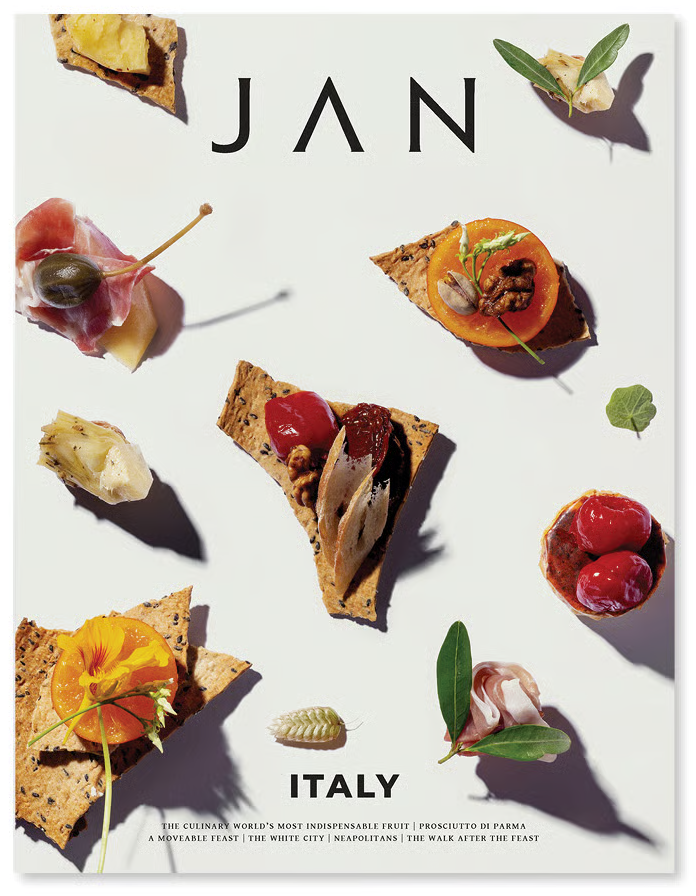DAMPFNUDELS AND DUMPLINGS
A ROUND-THE-WORLD TRIP ON A SQUISHY DOUGH CUSHION
One might be getting a bit carried away when saying that the dumpling is more of a state of mind than a specific dish, but it does refer more to a technique used to stuff a morsel of dough with whatever tickles your fancy. It’s that simple. True, the dumpling might seem like the culinary world’s answer to a question nobody asked, but its origins – and frequent occurrence around the globe – makes this unassuming little cold-weather fill-me-upper worthy of closer inspection.

WHAT’S IN A WORD?
The word itself is not exactly the kind of thing a culinary sleuth might get excited about. It doesn’t tell you anything about where it comes from, nor does it account for the differences between a Northern Chinese dumpling and an Irish one. It’s the essence of the words, umbrella term. Or is it?
Well, “they” (historians at large) reckon the actual word originated in 1600. This is one of those rare occasions when we’re treated to a rather exact date. Not “in the 17th century” or even “at the turn of the 16th century”, but 1600. In Norfolk, to be exact. Now, it’s important to note that the year doesn’t refer to the invention of the dumpling, just the invention of the word. The concept of the dumpling is so simple that it was probably invented at the dawn of bread 6,000 years ago.
Back to merry old 17th-century England, Norfolk dumplings were generally considered to be the county’s answer to the Yorkshire pudding, as they portrayed a similar role in the general populace’s lives, namely, to fill hungry stomachs on the cheap by “extending the meat”. Of course, these days we know that one doesn’t multiply one food group by simply adding another, but this was before the invention of nutrition science or indeed, the low-carb diet, in which no extension of meat is done with the addition of flour-based ingredients.
In short, the word is thought to have originated from the low German word, dampfnudel, a Bavarian dish that essentially boils down to steamed buns.
BUT WHAT IS IT?
One dumpling doyen might say it is steamed or boiled, while another might say it is baked or fried. But whether east of the sun or west of the moon, it is always made of a batter or dough that is either cooked and enjoyed by itself, or it is filled with meat, vegetables, or fruit. And whether you plan to have it as a starter, mains or dessert, you do you… and don’t let anyone tell you otherwise.
“They” also suspect, given its filling qualities, that dumplings – wherever they occur in the world – originated as a peasant dish, as it usually took the form of a soup or stew comprised of vegetables and a bit of meat. The addition of dumplings took the meal further by giving it more substance.
The dough is always region bound, and can be made from cereal, oats, wheat, barley, potatoes, pulses, rice, or maize. Over the course of its history, it has mostly popped up in colder climates, like Britain and Germanic Europe, although the Italian Gnocchi is also a type of dumpling. And then, of course, there’s the Chinese dumpling (made of rice), which is one of northern China’s most beloved traditional foods, especially at the beginning of the Lunar New Year, when dumplings are stuffed with meat and vegetables.
Whatever your idea of a dumpling – whether your loyalties lie with the warming comfort cuisine of northern and central Europe, the heartiness of Italian food, or the exoticism of Chinese flavours and textures – it’s one of those culinary reminders that, when all is said and done, no matter what your class or creed, we all eat the same.
Images sourced from Rijksmuseum














